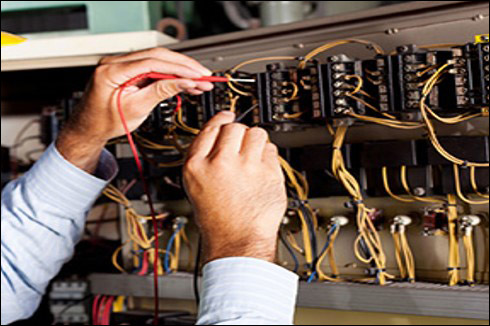The Consequences of Using the Wrong Electronic Cable in Your Industrial Application
In this age of high-efficiency production and processing, thousands of dollars’ worth of automation and monitoring devices and equipment rely on robust cabling solutions to work properly.
To ensure reliable signal transmission, you need cabling designed, tested and proven to meet your application’s high performance standards. Whether it’s for your controllers, I/O devices, sensors, transducers or terminal blocks; the right, high quality electronic cable is essential.
Many manufacturers may try to save money by buying cables or wires with a lower up-front cost (and less features), or that simply don’t meet the requirements of the application. In the end, this can be a terribly expensive mistake.
While the savings on the front-end may be tempting, there are many ways that the wrong cables can end up costing you far more money in the long run. How? These cables simply can’t withstand the environmental conditions they face each day.
Given the common consequences of using the wrong electronic cable and the potential impact on your bottom line, this simply isn’t the right approach. Keep the following in mind when you’re selecting electronic cables for your application:

Electrical performance, physical toughness and cable life are key to high-quality electronic cables.
Electrical Performance
Electrical performance is key to high quality electronic cables, especially in two areas:
- Capacitance. If your electronic cable’s capacitance is too high, it can’t relay signals properly over the distance needed. Without the ability to meet the requirements for your application’s distance, the signal becomes weak and unreliable.
- Impedance. Similarly, correct impedance is essential to proper cable performance. If impendence of the cable does not match control system requirements, then signal reflections that weaken and corrupt the signal could result.
What are the consequences of using electronic cables with poor electrical performance?
Choosing a cable with ill-suited electrical characteristics for the application can be costly. The transmitted signal may not be received as intended and the device may not function as required. For instance, a valve in a chemical manufacturing process must close at a specific time to assure the batch is produced within spec. But with the wrong cable in place, the resulting weak or corrupted signal can impair the timing and consistency. This could result in product rejection or even an operational shutdown to prevent further problems. The result is scrap, down time that can run thousands of dollars per hour and potential safety hazards for the employees.

If your cables can’t hold up to physical stress, you could end up with hours of downtime trying to diagnose the breakdown in the signal transmission.
Physical Toughness
Strong electrical performance isn’t enough if the physical toughness of the cables isn’t up to par. The food and beverage industry is a great example. The quality of electronic cables can be degraded by many environmental factors, including:
- Oil and grease. In food and beverage manufacturing, the oils from the machinery, as well as from the ingredients themselves, can end up on electronic cables. These oils penetrate the cable jackets, damaging the insulation and resulting in reduced performance or failure.
- Cold temperatures. When dealing with food or beverages, refrigeration and freezer space is critical. The extreme cold, however, can cause cable jackets and insulation to stiffen and crack when bent or if an unexpected impact occurs. The degraded cable then fails to transmit signals as specified.
What are the consequences of using cables that aren’t ruggedized?
Saving money by using cabled unsuitable for the application can cost you more than you think. If your cables can’t hold up to the physical stress that’s common in manufacturing facilities, you’ll not only end up with hours of downtime trying to diagnose the issue, but you could also lose thousands of dollars’ due to scrap.
Cable Life
Can your cables endure the stress associated with the life of the installation? This is essential to electronic cable performance. If the cables won’t last as long as expected, you’ll end up wasting time and money replacing them. The automotive manufacturing industry is a great example. Cables used in this application scenario endure stresses, such as:
- Flexing and bending. This doesn’t necessarily mean the stress associated with continuous flex applications, but simply the flexing that happens over the normal life span of an electronic cable. When used on an assembly line or on the equipment often found in the automotive industry (where movement and vibrations are frequent), even normal flexing can cause “low-cost” cables to break down and fail.
- Elevated temperatures. If the cable’s control cabinet is placed near heat or is frequently exposed to it, as is common in this industry, cables must have the capability to withstand heat over long periods of time. If the cable is not appropriate for the environment, the heat makes the cable brittle and susceptible to breaking and failing over time.
What are the consequences of using electrical cables with low cable life?
If your electronic cables can’t meet the requirements needed for their full installation life, you’ll end up dealing with continuous unscheduled downtime. With no warning before your system fails, you’ll waste time trying to pinpoint where the signal failure occurred and waste even more money on lost scrap materials and lost productivity.
Putting Electronic Cables to the Test
Given the common risks that can occur, you should put your cables to the test. Could they withstand the situations mentioned above? And more importantly, can you afford the consequences if your cables fail?
Belden electronic cables offer strong electrical performance, are rugged enough to withstand harsh environments and are designed to perform throughout the cable’s installation lifetime. But, don’t take our word for it. Sign-up below for a free sample of our cabling so you can see and feel the quality guaranteed to meet the needs of your application.
![System.String[]](https://assets.belden.com/transform/7d9664bf-965d-4965-a32d-382a9829c061/Author-Belden-Logo-sm-blue-2020-10?io=transform:fill,width:300,height:300)